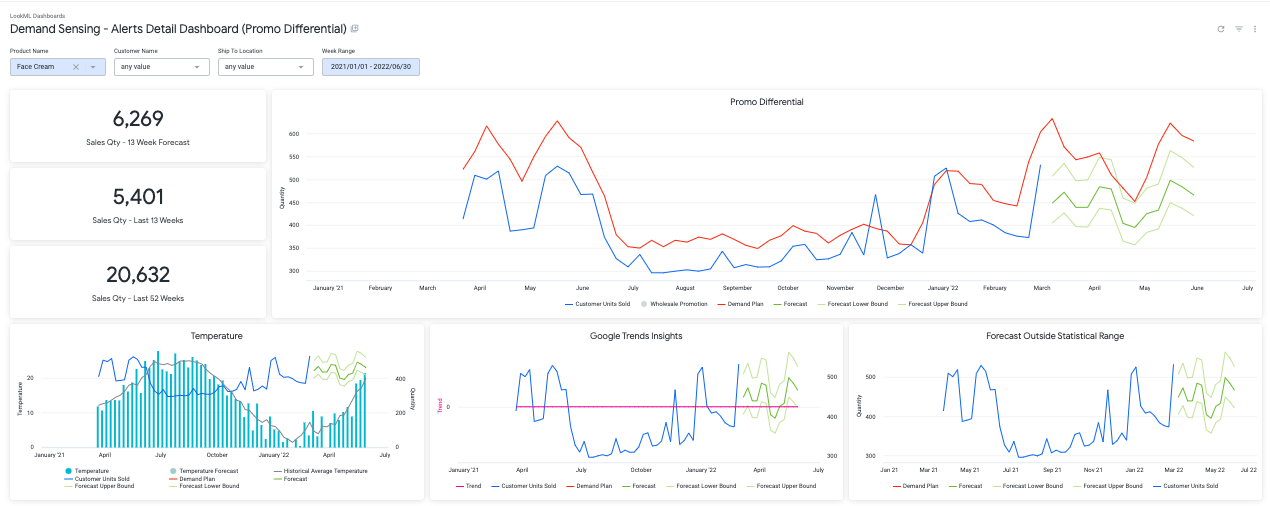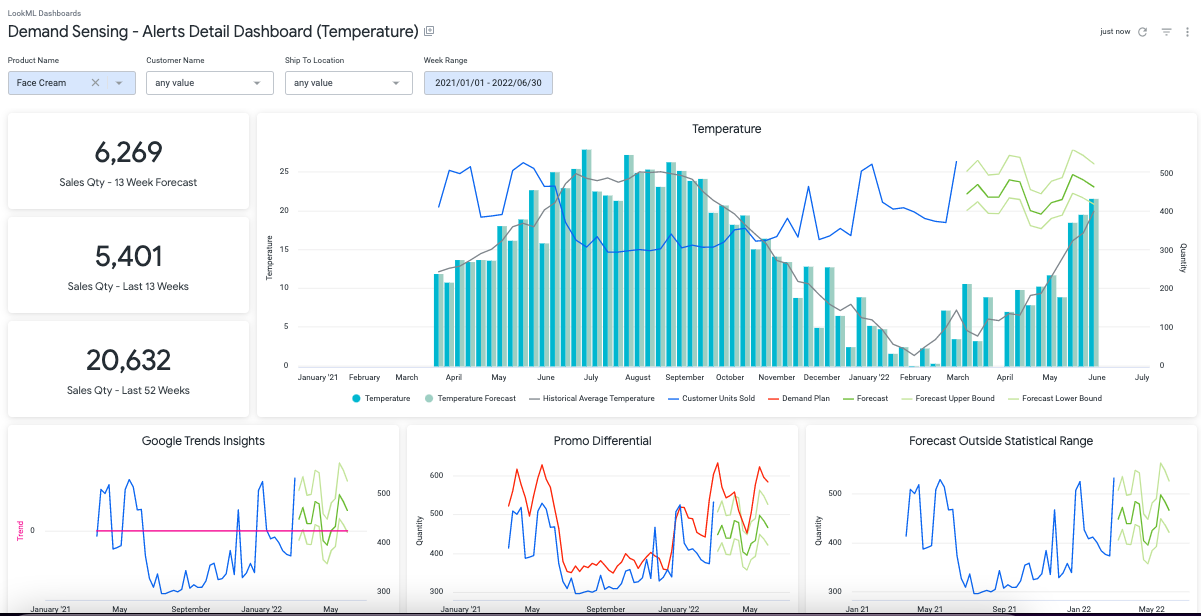
Transform Your Supply Chain Planning and Marketing Strategies with Google Cloud and SAP Integration

Transform Your Supply Chain Planning and Marketing Strategies with Google Cloud and SAP Integration
February 16, 2024 | Premangsu Bhattacharya
Blog / How Do You Improve Demand Forecasting Accuracy by 20% with External Datasets Using SAP IBP and Google AI Cloud?
Traditionally, demand forecasting has been rooted in the analysis of historical sales data. While this approach offers a baseline, it’s inherently backward-looking and often fails to account for the dynamic factors that influence future demand. These traditional models struggle to adapt to rapid market changes, seasonal variances, and external shocks, leading to inaccuracies that can ripple through the supply chain, causing overstock, stockouts, and lost sales.
The core limitation lies in the assumption that past patterns are reliable predictors of future demand, an assumption increasingly challenged by the volatile nature of today’s markets.

Let’s take the example of a demand planner using SAP IBP as their primary planning tool. They want to forecast demand for a newly launched line of heart-shaped pendants and their top-seller engagement rings in the Los Angeles market for Valentine’s Day, which is also their biggest sales season.
⚠️ But here is the problem – they need to predict which jewelry styles will become more popular in Los Angeles by analyzing online searches and social media mentions before placing final orders for materials.
ACME Retail, a jewelry retailer specializing in diamond rings, operates across the US market through retail chains and e-commerce platforms. Valentine’s Day is their most significant sales event, they aim to leverage Google Search trends data from specific US regions to enhance their demand forecasting accuracy. Here’s how they achieve this:
ACME Retail uses Pluto7’s Demand ML, a machine-learning solution hosted on Google Cloud. Demand ML offers a flexible architecture that allows ACME to plug external datasets, such as Google Search trends and weather data, directly into SAP IBP.

A real example of a Demand Sensing Dashboard implemented by Pluto7. Learn more here.
Step-by-Step Process:

A real example of a Demand Sensing dashboard that plugs in weather data along with 250 other external datasets. Learn more here.
Our internal data shows that over 90% of companies using Demand ML have improved their forecast accuracy by 30-40% within 4-6 weeks. To illustrate the improvement in demand forecasting accuracy, let’s consider hypothetical numerical data:

With Pluto7’s Demand ML, and similarly across Pluto7’s decision intelligence platforms, users are granted complete control over data models, UI, and dashboards. For ACME, this means:
This capability is crucial for demand planners who prefer to perform detailed analyses or adjustments in a familiar spreadsheet environment before finalizing their demand forecasts.
Throughout this blog, we have explored multiple scenarios where integrating external data proves invaluable. When we work with companies, they highlight three key benefits that significantly improve their data handling:
The ability to harness all these benefits, packaged efficiently within a 4-week timeframe, is why companies like AB InBev, Levi’s, Ulta Beauty, and others have chosen us for their data transformation projects. Interested in seeing how our decision intelligence platform can enhance your ERP data? Reach out for a personalized workshop.
ABOUT THE AUTHOR